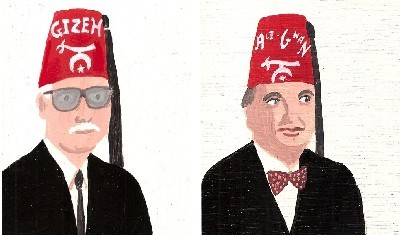I wish this was the echeck-list for my upcoming trip, but unfortunately it is not.
I will be heading to a place that is damp, cold and bitter this time of year.
I will be heading to Seattle, Washingtom for the next two weeks
so please visit the archive for your enlightenment.

Seattle is the northernmost major city in the continental United States, and the largest city in the Pacific Northwest and in the state of Washington. A seaport situated on an isthmus between Puget Sound (an arm of the Pacific Ocean) and Lake Washington, about 100 miles (160 km) south of the Canada – United States border, it is named after Chief Seattle, of the Duwamish and Suquamish native tribes. Seattle is the center of the Seattle–Tacoma–Bellevue metropolitan statistical area, the 15th largest in the United States, and the largest in the northwestern United States. Seattle is the county seat of King County and is the major economic, cultural and educational center in the region. As of April 2009, the city's population was approximately 617,000 within a metropolitan area of 4,158,000. The Port of Seattle and Seattle–Tacoma International Airport are major gateways to Asia, Alaska, and the rest of the world.
Seattle is on the I-5 corridor, about 170 miles (270 km) north of Portland, Oregon/Vancouver, Washington and 140 miles (230 km) south of Vancouver in British Columbia, Canada. The city of Victoria, British Columbia's capital, is about 110 miles (180 km) to the northwest (about 90 miles (140 km) by passenger ferry) while the eastern Washington hub city of Spokane lies 280 miles (450 km) to the east.
The Seattle area has been inhabited for at least 4,000 years, but white settlement began only in the mid-19th century. The first permanent European-descended settlers, Arthur A. Denny and those subsequently known as the Denny Party, arrived November 13, 1851. Early settlements in the area were called "New York-Alki" ("Alki" meaning "by and by" in Chinook Jargon) and "Duwamps". In 1853, Doc Maynard suggested that the main settlement be renamed "Seattle", an anglicized rendition of the name of Sealth, the chief of the two local tribes. From 1869 until 1982, Seattle was known as the "Queen City". Seattle's current official nickname is the "Emerald City", the result of a contest held in 1981; the reference is to the lush evergreen forests of the area. Seattle is also referred to informally as the "Gateway to Alaska", "Rain City", and "Jet City", the last from the local influence of Boeing. Seattle residents are known as Seattleites.
Seattle is the birthplace of rock legend Jimi Hendrix and the rock music style known as "grunge," which was made famous by local groups Nirvana, Soundgarden, Alice in Chains, and Pearl Jam. Bruce Lee and his son Brandon are both buried at Lakeview cemetery.
Seattle has a reputation for heavy coffee consumption; coffee companies founded or based in Seattle include Starbucks, Seattle's Best Coffee, and Tully's. There are also many successful independent artisanal espresso roasters and cafes.






































